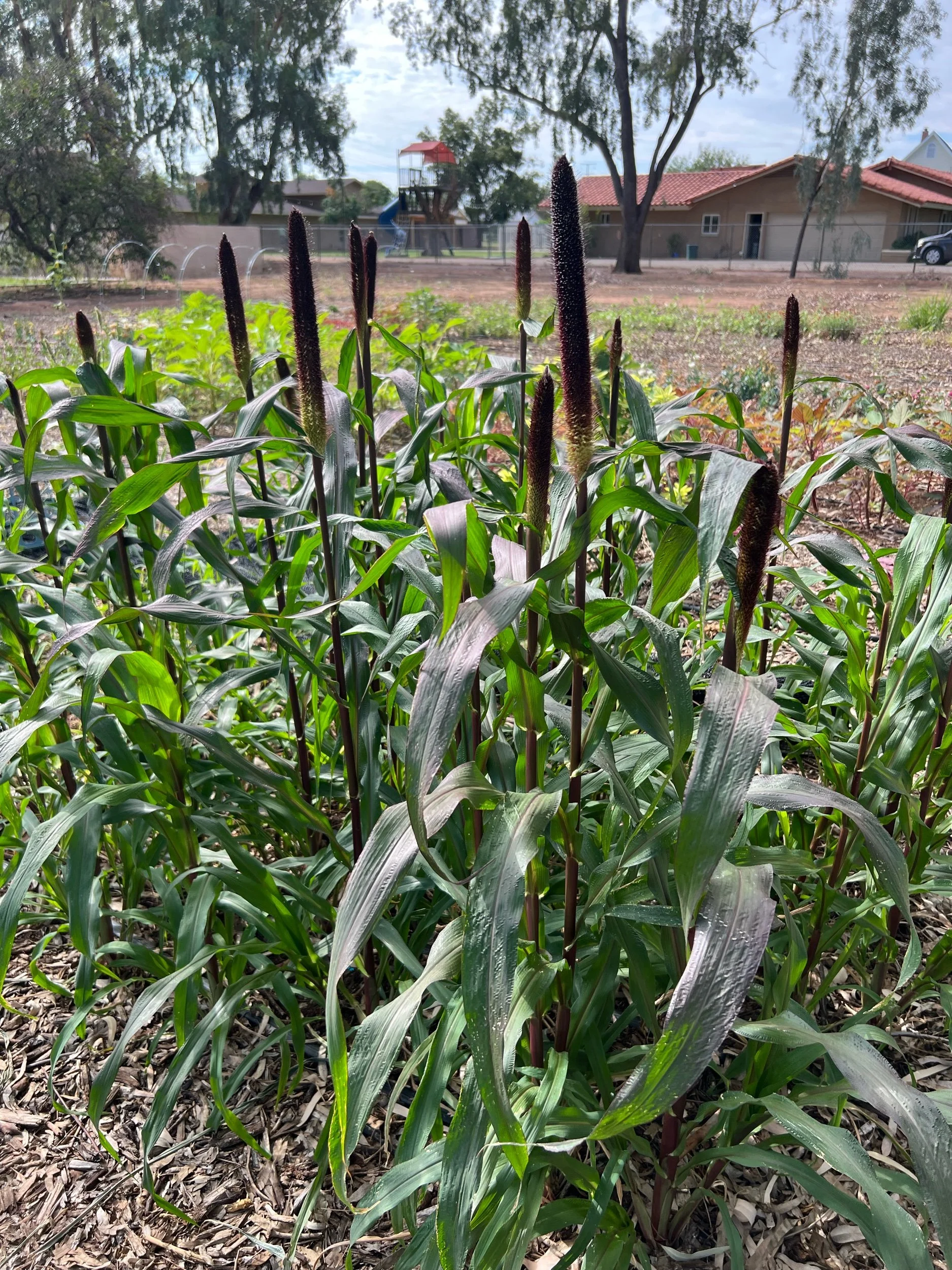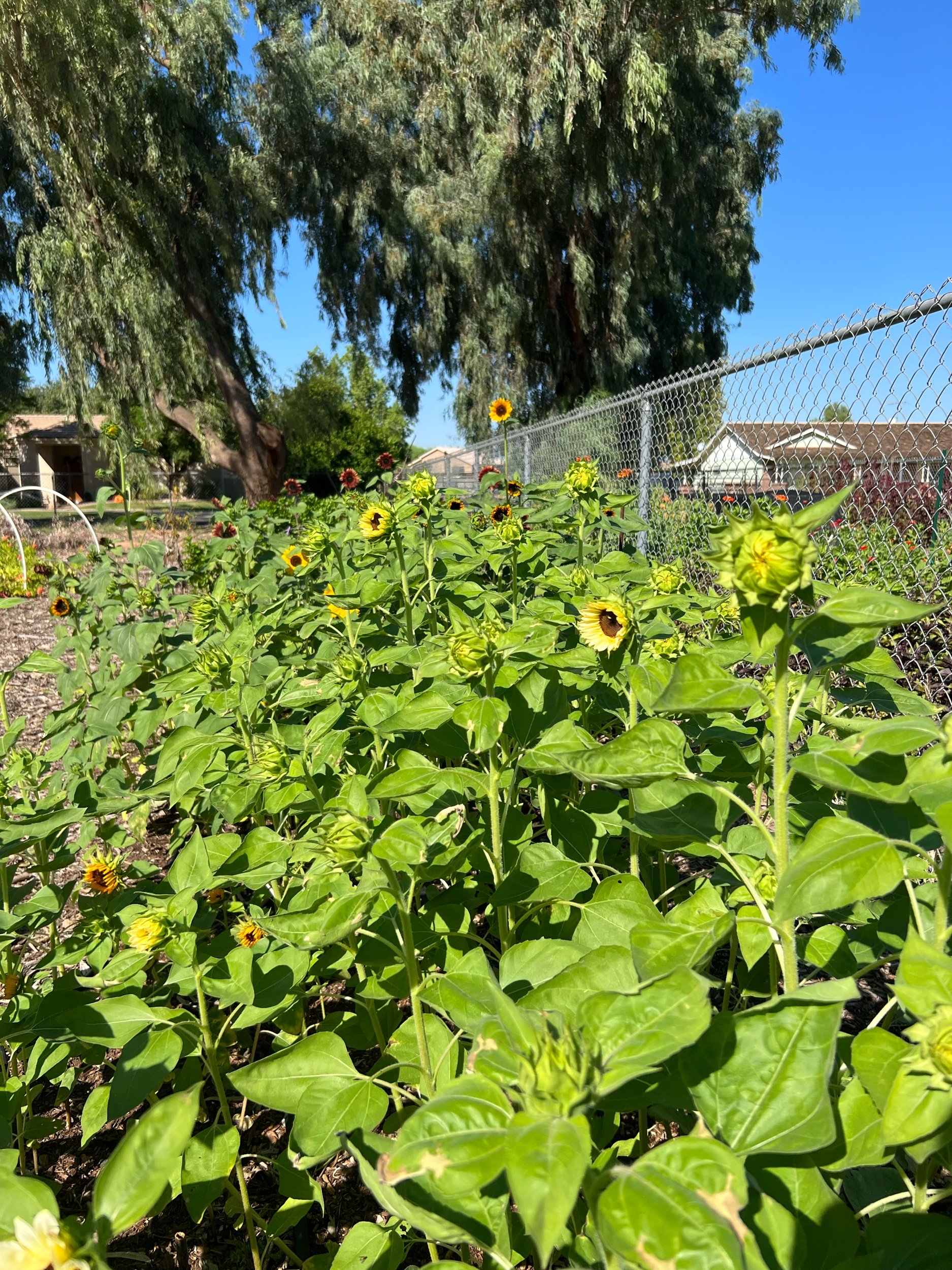Monsoon Planting Guide
Monsoons are seasonal rains here in Arizona during the summer months. This season officially starts on June 15th, but we typically don’t see rains start until after the 4th of July. Monsoons bring slightly higher humidity levels, which makes it a great time to sow warm-loving annuals. With a few Tips and tricks, you can be off to a garden full of flowers from late summer, to fall.
Microclimate:
Typically a good place to monsoon plant is on the east side of your home. This side gets great morning sun, without the brutal afternoon sun here in the Valley. If you don't have any Western shade, don’t worry. I usually recommend putting up a 30% shade cloth if that’s the case. I use rebar stakes and 1/2 PVC to make cheap hoops in my garden to put shade cloths over. I do not typically recommend using a shade cloth over 30% because it can lead to inferior plant growth.
Watering:
This is absolutely crucial for monsoon gardening. If I am direct sowing seeds, typically I water them 2x per day until they germinate. I then cut back to once per day for the lifespan of the plant. If we get a hot spell of about 110 degrees + I will check on the plants mid-afternoon to see if they need a second drink. I also recommend having an irrigation system installed during the summer months for consistent moisture to your seedlings.
Start inside vs. Direct sow:
some things can be done both directly and transplant, it takes some experimenting when doing so. Typically I start any expensive seed inside, to help ensure the highest germination. Direct sowing can leave room for the elements, insects, and bugs to eat seeds, so I always overseed more than what the seed packet says to compensate.
Direct sow:
start inside:
Millet
Marigolds
Nicotiana
Transplanting:
This is going to sound controversial but I do NOT harden off my seedlings in the sun before transplanting. I harden them off for a day in the shade, and then directly plant them in the field under TWO layers of 30% shade cloth (60% total). Hardening off seedlings in the sun can bake the root zones, and cause more stress on the plant than good. I like to transplant in the evening time so that they have all night to snuggle into their new home before they see the sun. After about a 7-10 day’s, I take one layer of the shade cloth off once i see that they are established and put on some growth. After about 14 days I take the second layer off depending on the weather. Ill typically leave the shade cloth on if temperatures are in the 110+ degree range.
Check out my seed starting list for all the goodies I use.
Direct sowing:
Direct sowing involves directly planting the seed into its permanent place. These seeds are typically bigger than seeds I would recommend transplanting. Amaranth is on this list because it’s a relatively cheap seed with good germination when watered correctly. I always put a 30% shade cloth over seedlings via PVC until they have 2 sets of true leaves. This helps protect them from the birds.
Compost:
Most compost picked up in bulk in the valley isn’t actually compost, it’s fine mulch or dust. I always recommend putting compost down 8 weeks before planting to help ensure it brakes down. If you do not do this, you can add compost if needed, 2 weeks after transplanting, or when the seedlings have 2-3 sets of true leaves. Fresh compost can draw moisture from the soil so keep an eye on it because you are going to have to water it extra. Dry compost is VERY hydro-phobic, so make sure you take the proper steps to moisten your compost thoroughly. Compost brakes down much faster in the summertime, so applying it now will give you nice workable soil for fall planting.
Pioneer Landscape and Arizona Worm Farm
Fresh compost can such nitrogen out of the soil. Making sure you properly fertilize too can help mitigate any problems with this. Weekly liquid fertilizer is recommended.
Fertilizing:
I typically use a balanced granular fertilizer once the seedlings have established 2-3 sets of true leaves. I then use a liquid fertilizer once a week throughout the lifespan of the plant. Plants like amaranth and sunflower typically do not require as much fertilizer. Maxsea and Neptunes Harvest.
Sourcing material:
seeds- Johnny’s Seeds, Geo Seeds, and Harris Seeds are some of my go-to’s.
Irrigation- drip depot ( I would use this if you have a large operation)
















